By the NCFishes.com Team
Our native species of darters and perches are just as brightly colored as many fishes one would find in a pet shop, yet few people are aware of their existence. There are 38 species of darters and perches in North Carolina (Table 1), including several species found in only one river basin and at least two species, which may be re-named or split into additional species (Tracy et al. 2020). [Please note: Tracy et al. (2020) may be downloaded for free at: https://trace.tennessee.edu/sfcproceedings/vol1/iss60/1.] Distributional maps for every species may be found in Tracy et al. (2020; Map Nos. 206-245). Two species have been extirpated from our state – Blueside Darter, Etheostoma jessiae, and Sickle Darter, Percina williamsi.
Table 1. Species of darters and perches found in North Carolina.| Scientific Name/ American Fisheries Society Accepted Common Name | Scientific Name/ American Fisheries Society Accepted Common Name |
|---|---|
| Etheostoma acuticeps, Sharphead Darter | Etheostoma thalassinum, Seagreen Darter |
| Etheostoma blennioides, Greenside Darter | Etheostoma vitreum, Glassy Darter |
| Etheostoma brevispinum, Carolina Fantail Darter | Etheostoma vulneratum, Wounded Darter |
| Etheostoma chlorobranchium, Greenfin Darter | Etheostoma zonale, Banded Darter |
| Etheostoma collis, Carolina Darter | Perca flavescens, Yellow Perch |
| Etheostoma flabellare, Fantail Darter | Percina aurantiaca, Tangerine Darter |
| Etheostoma fusiforme, Swamp Darter | Percina burtoni, Blotchside Logperch |
| Etheostoma gutselli, Tuckasegee Darter | Percina caprodes, Logperch |
| Etheostoma inscriptum, Turquoise Darter | Percina crassa, Piedmont Darter |
| Etheostoma kanawhae, Kanawha Darter | Percina evides, Gilt Darter |
| Etheostoma mariae, Pinewoods Darter | Percina gymnocephala, Appalachia Darter |
| Etheostoma nigrum, Johnny Darter | Percina nevisense, Chainback Darter |
| Etheostoma olmstedi, Tessellated Darter | Percina oxyrhynchus, Sharpnose Darter |
| Etheostoma perlongum, Waccamaw Darter | Percina rex, Roanoke Logperch |
| Etheostoma podostemone, Riverweed Darter | Percina roanoka, Roanoke Darter |
| Etheostoma rufilineatum, Redline Darter | Percina squamata, Olive Darter |
| Etheostoma serrifer, Sawcheek Darter | Percina westfalli, Westfall’s Darter |
| Etheostoma simoterum, Snubnose Darter | Sander canadensis, Sauger |
| Etheostoma swannanoa, Swannanoa Darter | Sander vitreus, Walleye |
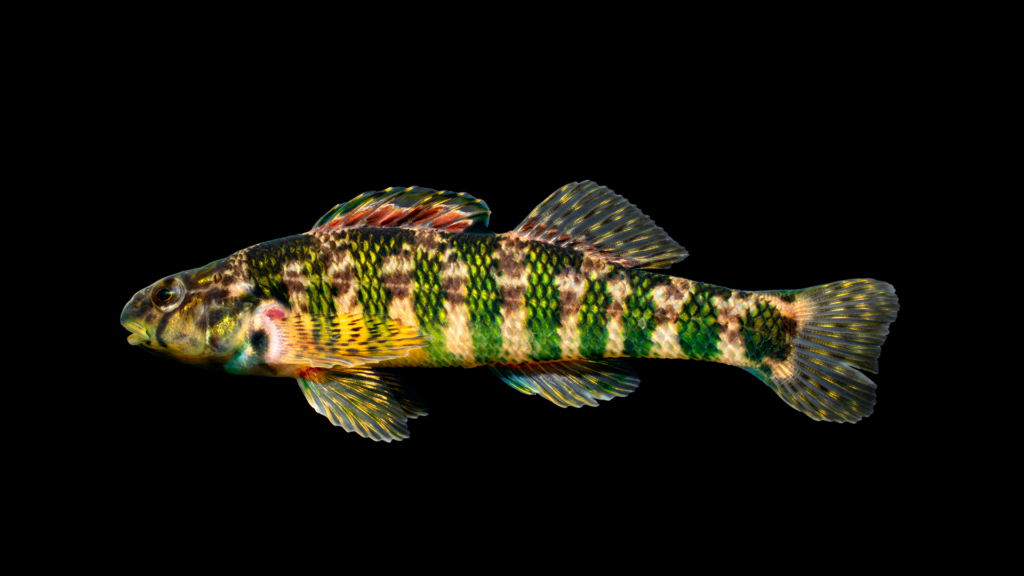
You might have heard people calling them simply darters, Raccoon Perch, Ringed Perch, Lake Perch, Redfin Perch, Jack Salmon, Pike, Pike Perch, Jackfish, Walleyed Pike, River Slicks, or many other colloquial names. But each species has its own scientific (Latin) name, which coincidentally actually means something (please refer to The Meanings of the Scientific Names of Darters and Perches, pages 23 and 24), and an American Fisheries Society-accepted common name (Page et al. 2013).
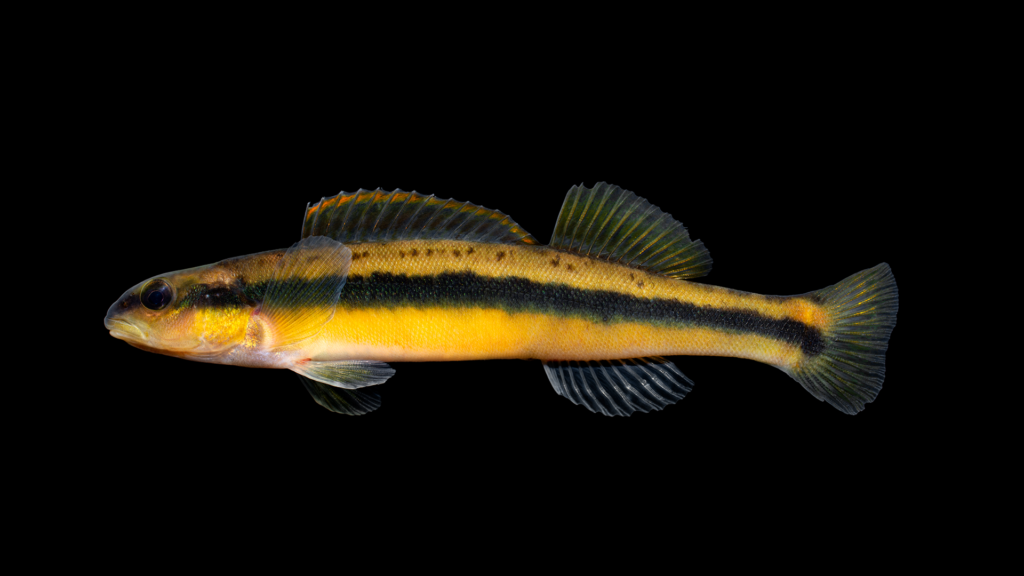
Darters and perches are found throughout our state from the Mountains to the Sand Hills to the Coastal Plain in reservoirs, creeks, large and small rivers, swamps, and channelized streams. [Note: see Supplemental Maps 1-3 , page 25, showing North Carolina’s 100 counties, 21 river basins, and 4 physiographic regions.] They can be found in turbulent and fast, cold, gin-clear Mountain streams to warm and turbid Piedmont streams to slow-moving, tannin (tea)-colored Sand Hills and Coastal Plain streams. Darters are generally found in riffles and runs, whereas Yellow Perch can also be found in reservoirs and ponds, and Walleye and Sauger may also be found in reservoirs and in pools and deep runs in low- to moderate-gradient rivers. At least two species, Banded Darter and Riverweed Darter, are closely associated with Riverweed, Podostemum, an aquatic plant that grows attached to rocks in riffles and runs. Most darters are only a few inches long, but Walleye and Sauger can reach almost 3 feet in length and along with Yellow Perch are widely sought after game species noted for their delectability.
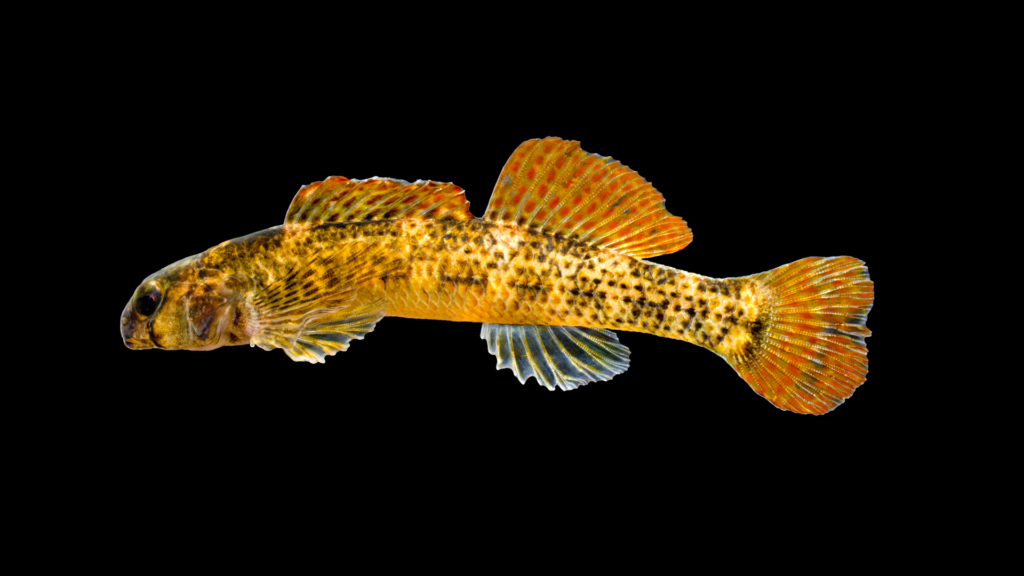
Thirteen species of darters were scientifically described from North Carolina (Table 2; Tracy et al 2020). Four of these species were describe by Edward Drinker Cope in 1870, including two from Wake County near Raleigh.
Table 2. Species of darters scientifically described from North Carolina.| Common Name | Scientific Name | Type Locailty |
|---|---|---|
| Carolina Darter | Etheostoma brevispinum (Coker) 1926 | Paddys Creek near Lake James, Burke Co. |
| Greenfin Darter | Etheostoma chlorobranchium Zorach 1972 | Cullasaja River near Franklin, Macon Co. |
| Tuckasegee Darter | Etheostoma gutselli (Hildebrand) 1932 | Tuckasegee River near Ela, Swain Co. |
| Kanawha Darter | Etheostoma kanawhae (Raney) 1941 | North Fork of the New River at Crumpler, Ashe Co. |
| Pinewoods Darter | Etheostoma mariae (Fowler) 1947 | Outlet of Watson’s Lake near Southern Pines, Moore Co. |
| Waccamaw Darter | Etheostoma perlongum (Hubbs & Raney) 1946 | Lake Waccamaw, Columbus Co. |
| Redline Darter | Etheostoma rufilineatum (Cope) 1870 | Spring Creek at Hot Springs, Madison Co. |
| Sawcheek Darter | Etheostoma serrifer (Hubbs & Cannon) 1935 | Buffalo Creek near Wendell, Wake Co. |
| Glassy Darter | Etheostoma vitreum (Cope) 1870 | Walnut Creek at Raleigh, Wake Co. |
| Wounded Darter | Etheostoma vulneratum (Cope) 1870 | Spring Creek at Hot Springs, Madison Co. |
| Blotchside Logperch | Percina burtoni Fowler 1945 | Swannanoa River near Oteen, Buncombe Co. |
| Appalachia Darter | Percina gymnocephala Beckham 1980 | South Fork New River near West Jefferson, Ashe Co. |
| Chainback Darter | Percina nevisense (Cope) 1870 | Falls of the Neuse River, Wake Co. |
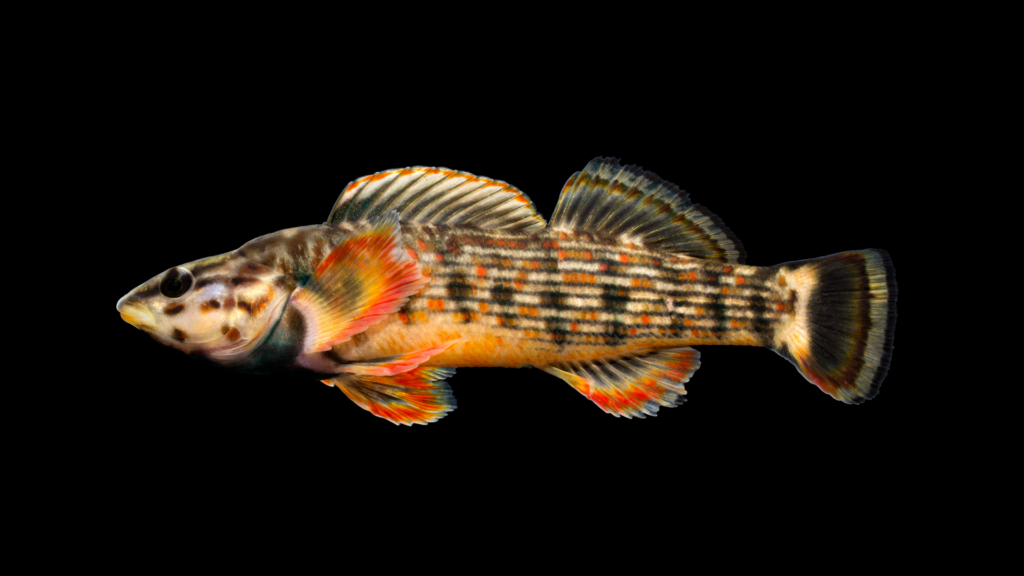
Each of North Carolina’s 100 counties has at least one species of darter found within its borders. Yellow Perch is found in 18 of our 21 basins; it has yet to be found in the Savannah, Watauga, and Nolichucky basins. It has been introduced into the French Broad, Pigeon, Little Tennessee, and Hiwassee basins. Our most diverse basin is the French Broad where there are currently 13 indigenous (native) species and 2 nonindigenous (introduced) species (Yellow Perch and Swamp Darter); four species have been extirpated from the basin – Blueside Darter, Wounded Darter, Sickle Darter, and Blotchside Logperch (Figure 1). The least diverse basin is the small, headwaters Watauga basin with only Greenfin Darter and Tangerine Darter. Twelve species are found in only one basin (Table 3). Along with the four species extirpated from the French Broad basin, Walleye has long been extirpated from the Neuse basin.
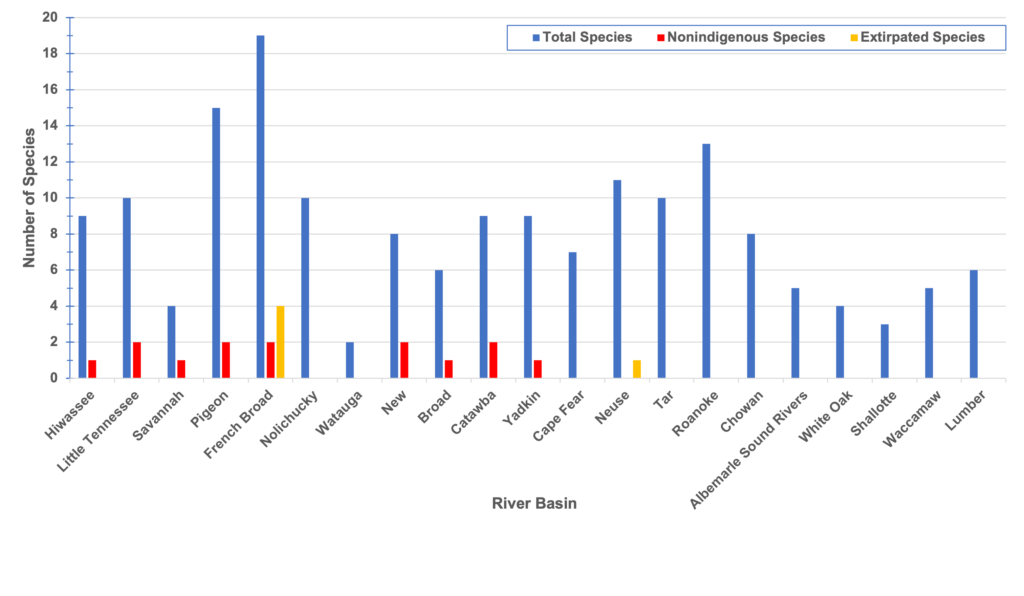
Figure 1. Diversity of the Family Percidae across North Carolina’s river basins.
Table 3. Species of darters and perches found in only one river basin in North Carolina.| River Basin | Species |
|---|---|
| New | Kanawha Darter, Appalachia Darter, Sharpnose Darter |
| Nolichucky | Sharphead Darter, Blotchside Logperch |
| Little Tennessee | Wounded Darter |
| Savannah | Turquoise Darter, Westfall’s Darter |
| Roanoke | Riverweed Darter, Roanoke Logperch |
| Lumber | Pinewoods Darter |
| Waccamaw | Waccamaw Darter |
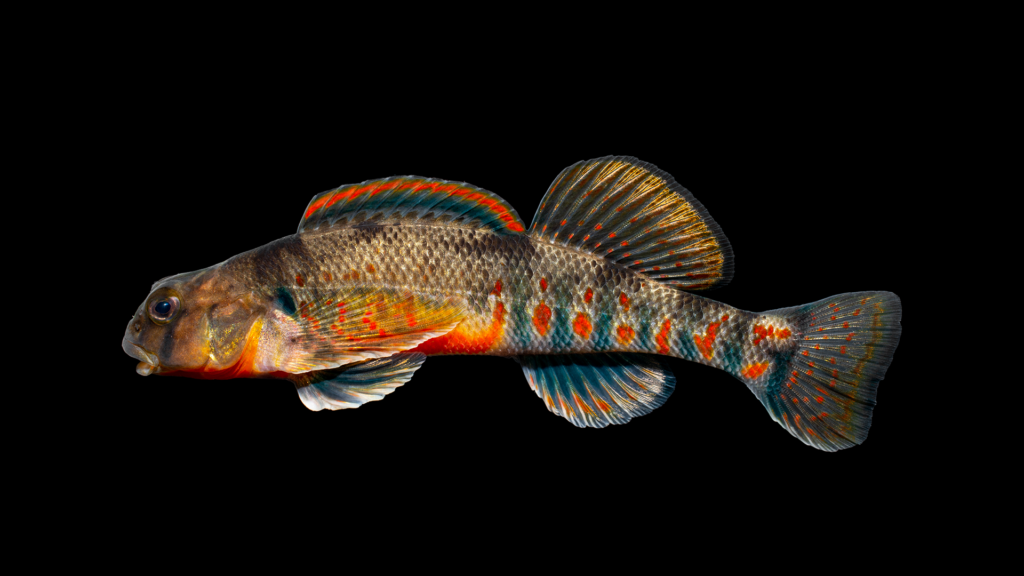
Because many darter species are endemic to specific basins, 18 species are considered imperiled in North Carolina (Table 4; Krabbenhoft et al. 2006; NCAC 2017; NCNHP 2018; NCWRC 2017; Roberts and Rosenberger 2008). Walleye, Sauger, and Yellow Perch, on the other hand, are classified and managed as game species by the North Carolina Wildlife Resources Commission (NCWRC 2020). For more specific information on Walleye and Yellow Perch, please see: the North Carolina Wildlife Resources Commission sport fish profiles (NCWRC 2010; NCWRC 2011, NCWRC undated).
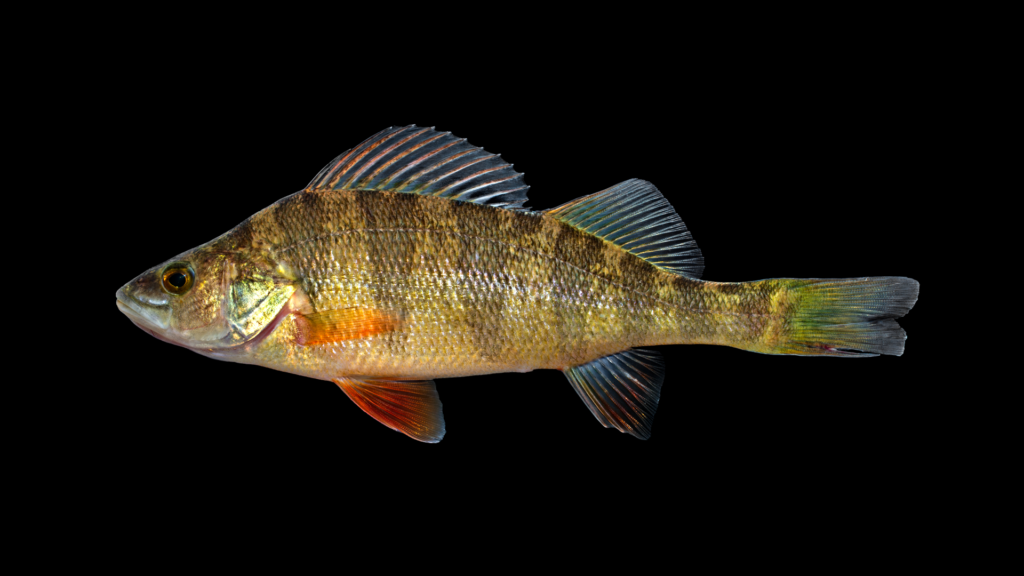
| Level of Imperilment | Species |
|---|---|
| Endangered | Blotchside Logperch, Sharpnose Darter, Roanoke Logperch* |
| Threatened | Sharphead Darter, Turquoise Darter, Logperch, Waccamaw Darter |
| Special Concern | Carolina Darter, Pinewoods Darter, Snubnose Darter, Wounded Darter, Olive Darter, Westfall’s Darter |
| Significantly Rare | Kanawha Darter, Riverweed Darter, Seagreen Darter, Appalachia Darter, Sauger |
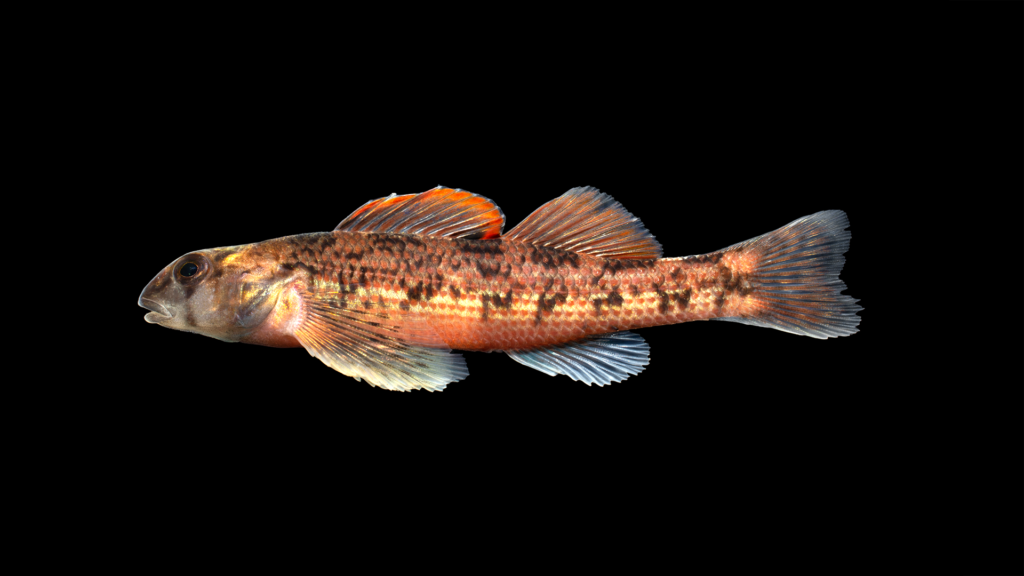
As compared to other families of fish, e.g., sunfishes and catfishes, few species of darters have been introduced outside of their native ranges in North Carolina. It is suspected that bait bucket dumps have led to the introduction of Tessellated Darter into the New basin and Redline Darter into the Little Tennessee basin. Transportation of aquatic plants may have led to the introduction of the Swamp Darter into the French Broad and Pigeon. And Yellow Perch, Walleye, and Sauger, have been stocked because of their popularity as game fishes.
Key characteristics for their proper identification include the presence/absence of modified scales on the belly; the presence/absence of scales on the nape and cheek; the presence/absence of a frenum; the number and thickness of anal fin spines; lateral line shape and scale counts; the number of un-pored lateral line scales; the number of spines and rays in the dorsal fins; overall color patterns; and the geographical distributions of the species (please refer to Identification Key to the Species of Darters and Perches (Family Percidae) in North Carolina). Most species can easily be told apart from one another, with the possible exceptions of Johnny vs. Tessellated darters and Swamp vs. Carolina darters where their ranges also overlap.
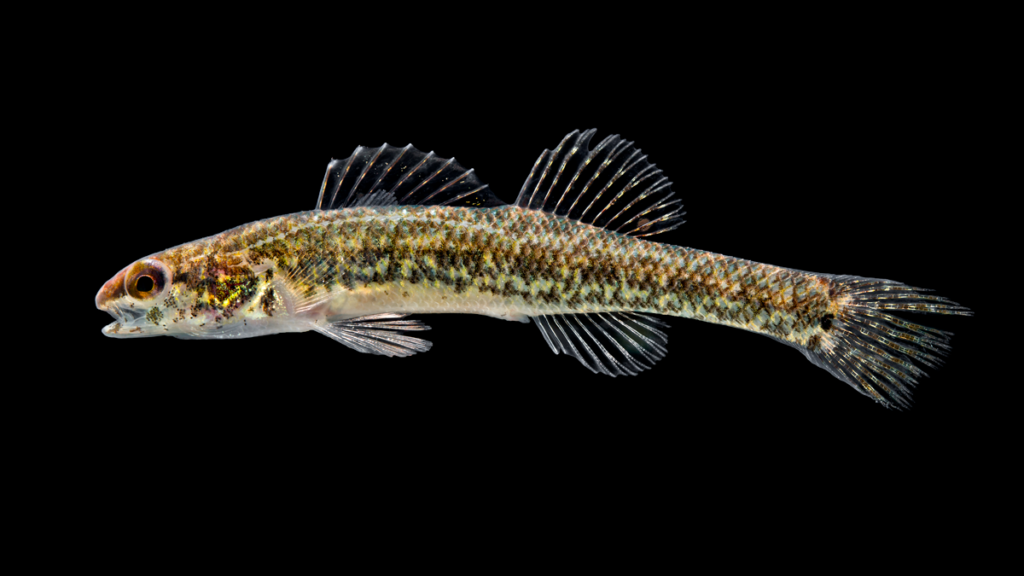
If you have troubles with your identifications, just send us (https://ncfishes.com/contact/) an e-mail and include as many quality digital photographs as you can along with all the pertinent locality descriptors so that we will know from where the fish came.